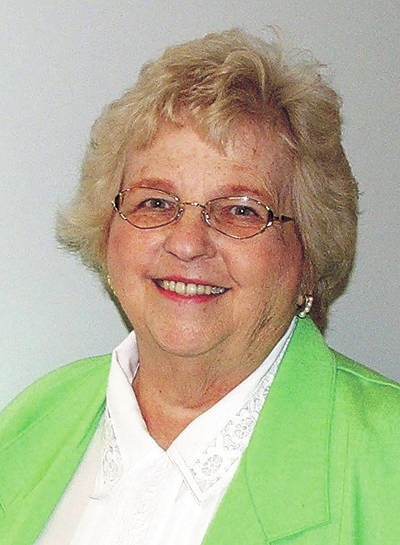
During the early summer, the citizens in the United States seem to be more patriotic than any other time of the year. Perhaps it is because we remember those who have served our country with Memorial Day, Flag Day, and of course Independence Day calls for more celebrations and more flags flying.
After the “War to End all Wars” – that is World War I, the country celebrated a great time of peace and prosperity.
When Pearl Harbor was bombed, President Franklin D. Roosevelt declared that the United States was at war.
Men were asked to enlist in the military services, and then women were also encouraged to join. When there were still not enough individuals serving, a draft was set up, and able-bodied men were recruited.
This meant that many jobs in the civilian field were left unattended while men of all eligible ages joined the military.
Prior to this time, few women worked outside the home, and almost none worked in manufacturing plants, but all this changed in a short period of time.
Plants which had manufactured peace-time equipment were suddenly turned into war plants, manufacturing tanks and guns, jeeps and cannons.
It was a time when there was little discord among the citizens as all were “in this together”, fighting for the freedom of the United States. Once again, patriotism ran high. Flags were flown and small banners were in windows, showing one or more stars to indicate that a person from that home was serving in the military.
Many items were rationed for the war effort in order to provide for the troops such as rubber, coffee and sugar.
Ration books were issued for each member of the household. Inside were “stamps” which could be used to purchase items such as shoes, tires and some grocery products which were not in great supply.
The old term “Use it up, wear it out, make it do or do without” became almost household words. Those who used sugar in their coffee learned to drink it without.
Residents were asked to have “victory gardens” in their back yards to plant whatever vegetables they could for their families so that there would be more food available to feed the military.
Scrap metal was salvaged for the war effort.
War Bonds (now Savings Bonds) were issued to raise funds for the Government. Children were encouraged to bring their dimes to school to purchase Savings Stamps. The stamps were licked and fastened into a savings book and when the book was filed, it could be turned in and a War Bond would be received.
In larger cities, Bond Drives were held. Citizens paid a fee to see some of the best-known Hollywood stars on stage. The funds raised were used for the war effort. “V” for Victory was often heard at throughout the country. The effort to win the war was prevalent every walk of life.
Posters encouraging residents to join any branch of the Service and also to encourage blood drives were shown. More blood than usual was requested to help those soldiers and sailors who were injured while fighting.
If you were a movie goer, short film clips showing the progress of the war were seen along with the featured movie. This was before television was popular and was one of the ways, in addition to printed materials to visualize what was happening in the war effort. War correspondents such as Ernie Pyle would send news releases regularly on the progress of the war. Those reporters often were encamped with the military.
People from all walks of life were recycling cans, other metals and paper. Shoes were re-soled and repaired while tires were patched to avoid using additional rubber. Gasoline was rationed and public transportation and car-pooling became popular. Everyone seemed to want to be a part of this gigantic war effort.
Ladies who wore hose often took their stockings with runs to a local store to have them re-woven when possible. Younger women used leg make-up to give the illusion of stockings including using a marker to make a “seam” on the back of the “stocking”
Women went to work in the factories, taking jobs which had previously only done by men. Posters showing “Rosie the Riveter” were popular. This was a picture of a woman with a bandanna on her head and blue jeans, flexing her muscle while doing the job the men were no longer available to do. “The woman behind the man behind the gun” was a popular phrase recalling the women who were manufacturing guns and ammunition.
Each day, the newspapers reported the progress of the war. Air raids were practiced in every community including “brown outs” or “black outs” where lights were dimmed or shut off in homes in preparation of possible enemy plane attacks. Air Raid sirens were put up (similar to today’s tornado sirens).
The nation stayed ready and folks were resilient, keeping up the war effort until at last, the word PEACE appeared in the headlines. The military personnel would be returning home, and citizens hoped there would never be another war. American flags will continue to fly throughout the country to show our respect for America and the freedom for which it stands.


